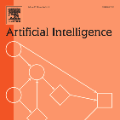The end-to-end learning pipeline is gradually creating a paradigm shift in the ongoing development of highly autonomous vehicles, largely due to advances in deep learning, the availability of large-scale training datasets, and improvements in integrated sensor devices. However, a lack of explainability in real-time decisions with contemporary learning methods impedes user trust and attenuates the widespread deployment and commercialization of such vehicles. Moreover, the issue is exacerbated when these cars are involved in or cause traffic accidents. Consequently, explainability in end-to-end autonomous driving is essential to build trust in vehicular automation. With that said, automotive researchers have not yet rigorously explored safety benefits and consequences of explanations in end-to-end autonomous driving. This paper aims to bridge the gaps between these topics and seeks to answer the following research question: What are safety implications of explanations in end-to-end autonomous driving? In this regard, we first revisit established safety and explainability concepts in end-to-end driving. Furthermore, we present three critical case studies and show the pivotal role of explanations in enhancing self-driving safety. Finally, we describe insights from empirical studies and reveal potential value, limitations, and caveats of practical explainable AI methods with respect to their safety assurance in end-to-end driving.
翻译:暂无翻译



